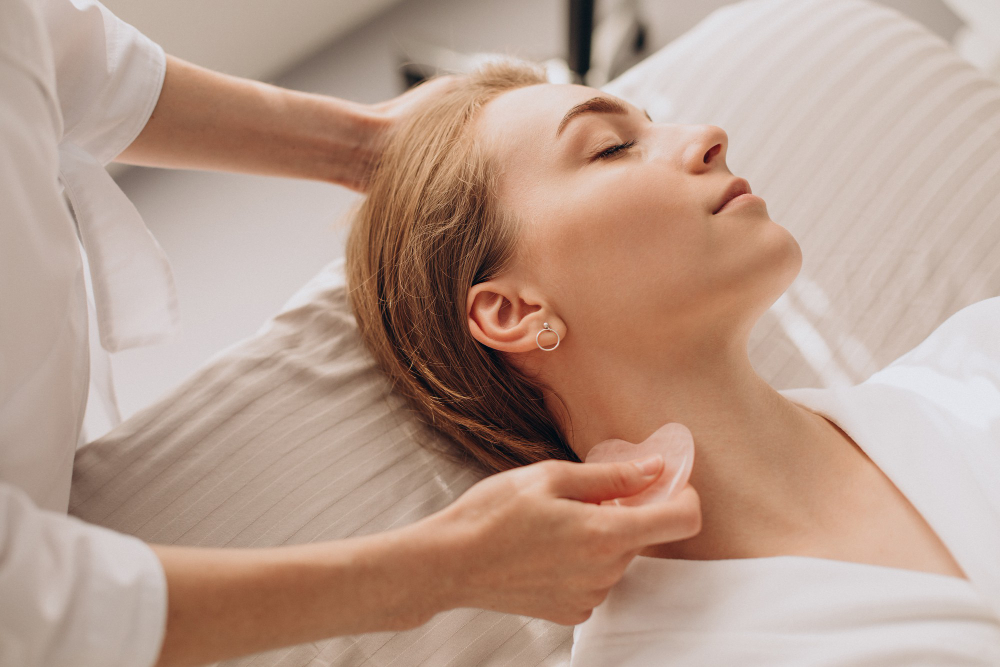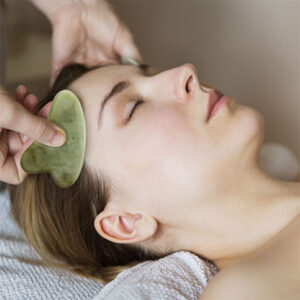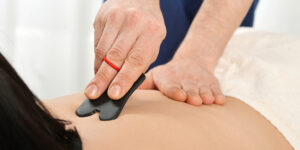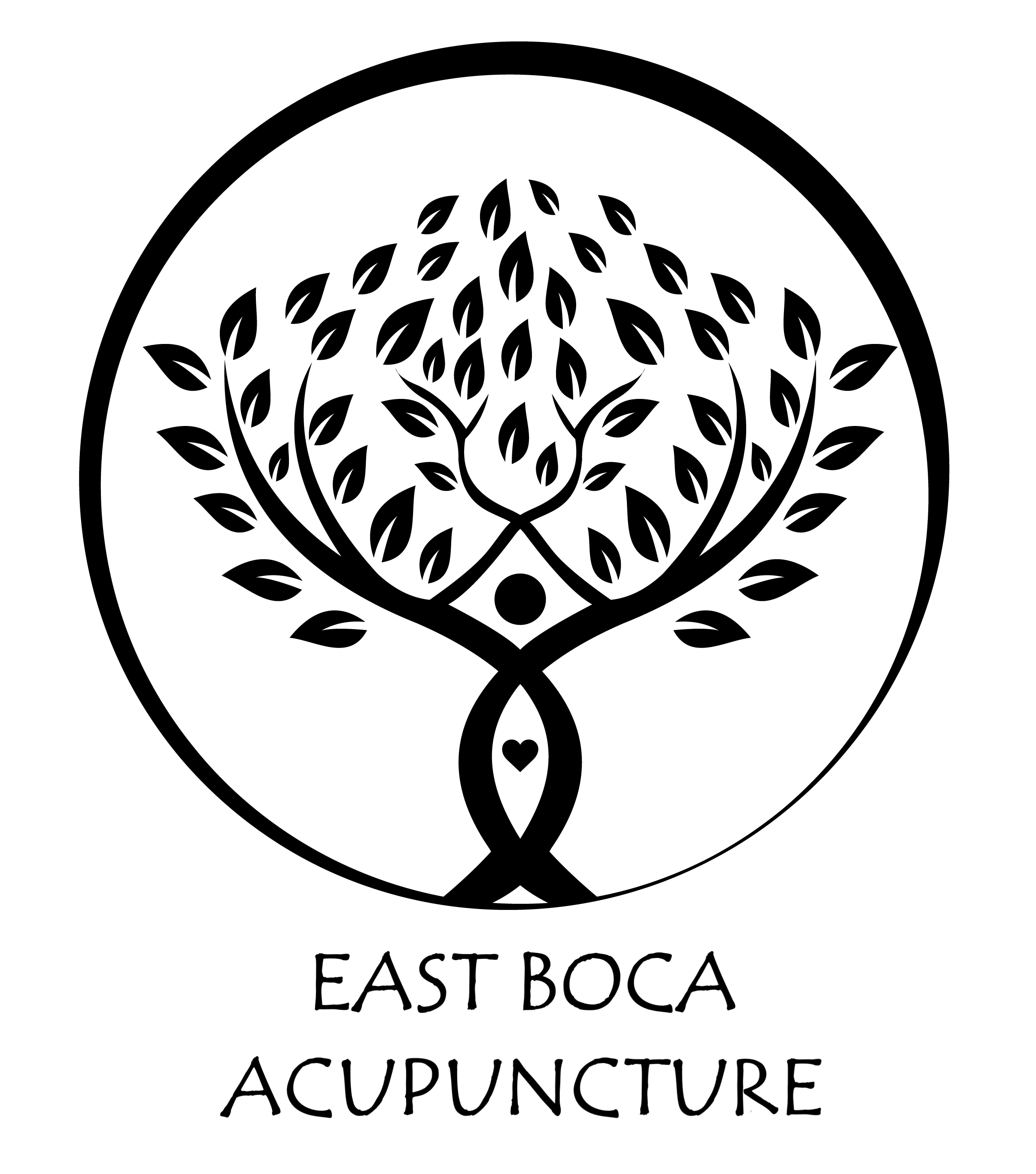Gua Sha
A Gua Sha is a flat tool that is used with a gentle scraping motion along with areas of fascial constriction. Gua translates to stroke or press, and Sha translates to redness. According to early Chinese Medicine practitioners, the redness that is obtained through scraping encourages the skin to heal itself. This can be done to help aid the lymphatic system.

Cecilia Wong, a Manhattan celebrity facialist has used facial gua sha on her clients for years and started practicing the technique on herself at the age of 10. She says, “What I love most about gua sha is that results are immediate, and you can’t say that about everything. After gua sha, my skin is lifted, tightened, and any puffiness is gone.”
If you’re wondering about the correct gua sha pronunciation, it’s “gwa sha.” Rather than using the hands, this ancient (likely overly 2,000 years old) Chinese therapy uses a tool to rub or scrape the skin’s surface in long strokes. The purpose is to help move energy, known as qi or chi, around the body. Traditional medicine practitioners have used this method for centuries to boost circulation, increase blood flow, break up scar tissue, help chronic pain and generally improve the health of the entire body.
This type of therapy can be used on areas of the body such as the back, arms, legs and buttocks, and it can also be used on the face. Right now, gua sha facials are seeing a huge surge in popularity. It feels similar to a massage but rather than a hand, you’re feeling the gliding strokes of a hard tool with rounded edges against your skin. Oil is used to ensure the tool glides easily and doesn’t tug on your skin.



